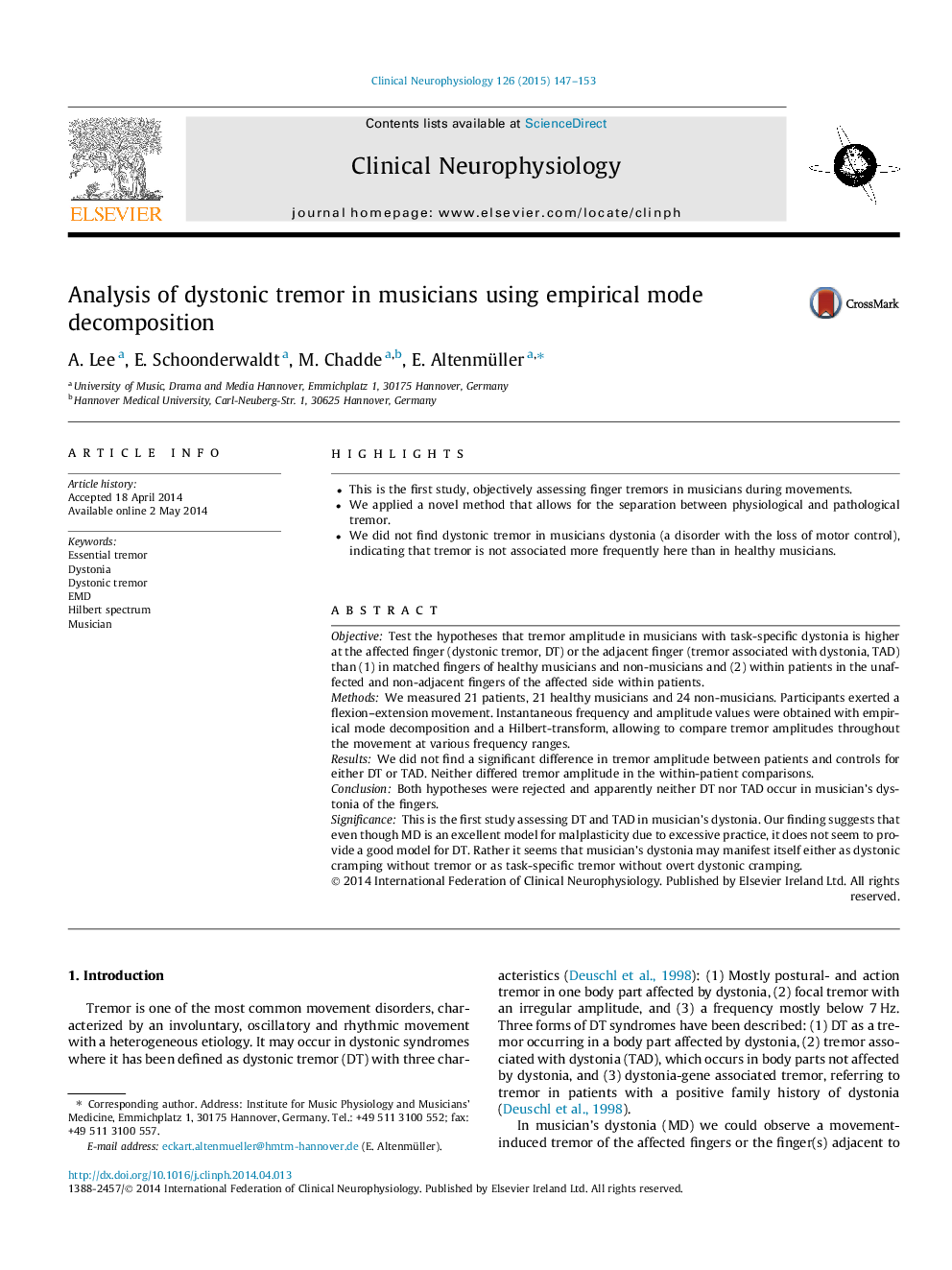| Article ID | Journal | Published Year | Pages | File Type |
|---|---|---|---|---|
| 3043220 | Clinical Neurophysiology | 2015 | 7 Pages |
•This is the first study, objectively assessing finger tremors in musicians during movements.•We applied a novel method that allows for the separation between physiological and pathological tremor.•We did not find dystonic tremor in musicians dystonia (a disorder with the loss of motor control), indicating that tremor is not associated more frequently here than in healthy musicians.
ObjectiveTest the hypotheses that tremor amplitude in musicians with task-specific dystonia is higher at the affected finger (dystonic tremor, DT) or the adjacent finger (tremor associated with dystonia, TAD) than (1) in matched fingers of healthy musicians and non-musicians and (2) within patients in the unaffected and non-adjacent fingers of the affected side within patients.MethodsWe measured 21 patients, 21 healthy musicians and 24 non-musicians. Participants exerted a flexion–extension movement. Instantaneous frequency and amplitude values were obtained with empirical mode decomposition and a Hilbert-transform, allowing to compare tremor amplitudes throughout the movement at various frequency ranges.ResultsWe did not find a significant difference in tremor amplitude between patients and controls for either DT or TAD. Neither differed tremor amplitude in the within-patient comparisons.ConclusionBoth hypotheses were rejected and apparently neither DT nor TAD occur in musician’s dystonia of the fingers.SignificanceThis is the first study assessing DT and TAD in musician’s dystonia. Our finding suggests that even though MD is an excellent model for malplasticity due to excessive practice, it does not seem to provide a good model for DT. Rather it seems that musician’s dystonia may manifest itself either as dystonic cramping without tremor or as task-specific tremor without overt dystonic cramping.
